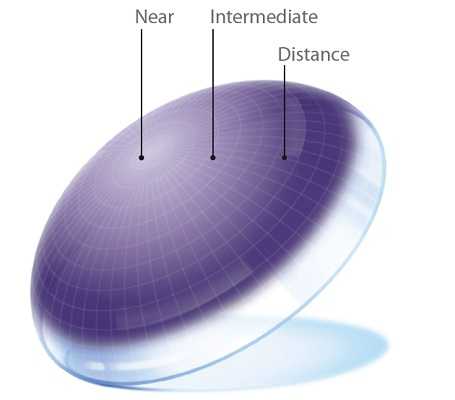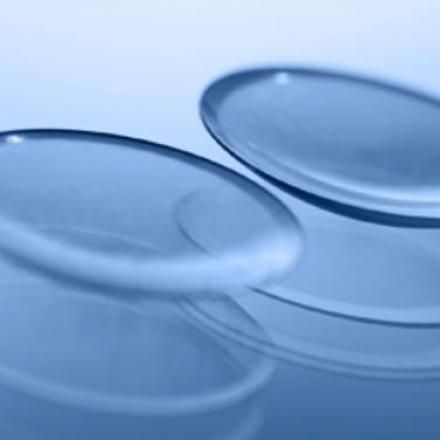
Contact Lens For Presbyopia
Contact lenses can be used to treat presbyopia. There are an increasing number of types and brands available, making them successful at correcting a variety of vision problems. Contact lens for presbyopia may be a good choice for people who do not want to use glasses. However, it is frequently challenging to achieve both excellent near and far vision with contact lenses alone.
If you are just beginning to experience presbyopia, you need to discuss your feelings about the type of correction you want with your eye care professional. If you are opposed to the idea of glasses but not ready to consider relatively new surgical procedures, contact lens for presbyopia may be your best choice.
If you have never needed glasses or correction previously, and you choose to wear contact lenses to reduce the difficulties you are having with near vision due to presbyopia, the quality of your distance vision may decrease. This is why reading glasses, may be the best initial choice for early, mild presbyopia. You can use them for reading, and look over them to see farther away. You can take them off when you don’t need them. However, many people do not want glasses.
Type Of Contact Lens For Presbyopia
Contact lenses are either “rigid gas-permeable (RGP)” or soft. RGP lenses may correct vision better but in general are less comfortable. Disposable daily soft lenses require no care and are thrown away every day. Other soft lenses that need daily cleaning and sterilization are replaced periodically. Most are available as bifocals or multifocals of some type.
Contact lens companies are constantly developing better products with more benefits. The FDA maintains a list of approved lenses and keeps a record of any complaints or problems about specific lenses.
There are two general ways to use contact lenses to correct presbyopia, using lenses in one eye (monovision) or both eyes.
Monovision for Presbyopia
With monovision correction, a lens is used in one eye to allow clear vision close up. The other eye may not need a lens if you have no other visual problems. If you are nearsighted (myopic), you will wear a contact lens in your dominant eye (as determined by your eye care professional) for far vision. The other eye will have a lens to improve close vision.
If you really do not want glasses, monovision correction may be a good idea. Monovision takes time to adjust to, and not everyone finds it effective. Some people are bothered by a decrease in depth perception and have trouble with driving and certain work activities. It is estimated that 60% to 80% of appropriate patients do will with monovision correction. You will not know if it will work for you unless you try it. Most eye care professionals offer lenses for a trial period.
The same approach can be used if you are nearsighted. In that case, your dominant eye will wear a lens to improve distance vision, and the non-dominant eye will wear a lens for close vision
Contact Lenses in both Eyes
The other choice is to use contact lens for presbyopia in both eyes. This contact lens must allow correction of both close vision and far vision if you are nearsighted. If you only have presbyopia, the lens must still have correction built in to allow you to still see well at a distance.
If you do not want to try monovision, or do not have acceptable vision with monovision therapy and you do not want glasses, you can try special contact lenses to correct both of your visual problems at once.
Bifical Contact Lenses
Bifocal contact lens for presbyopia are weighted so that the area used to correct near vision is always at the bottom. That way, when you look down to read or do close work, you are seeing through the close vision correction, and when you look up, you are seeing through the part of the lens designed to improve distance vision. These lenses are not always comfortable or good enough at correcting vision.
Multifocal Contact Lenses
Better vision may be obtained with presbyopia multifocal contact lenses. There are many types of multifocal lenses which are made in slightly different ways. There are reusable and disposable choices made by different companies.
Multifocal contacts for presbyopia take time to get accustomed to using, and you should get a trial pair. Because these lenses attempt to correct both problems, they may not give you the best vision at either point. You might still need half glasses for reading small print and close work, and/or you may need additional correction for the best distance vision. This is especially important for driving.
Additionally, if you have other visual problems, for example astigmatism, glasses may be needed some of the time because contact lenses cannot completely correct all problems. Although sometimes you might find multifocal toric contact lenses which can also correct astigmatism.
Examples of Multifocal Contact lenses:
1- Acuvue Oasys for Presbyopia
2- Focus Dailies Progressive Contact Lenses
3- Frequency Multifocal Lenses
4- Proclear Multifocal Toric Lenses
Conclusion
For many people, contact lenses can help deal with presbyopia so that they do not need to wear glasses all the time, but depending on other visual difficulties as well as when the presbyopia becomes more severe, glasses may also be needed some of the time.
The best choice for each person depends on their vision, their eye health, their motivation to use and take care of contact lenses, and how well they adjust to them. You should discuss all of this with your own eye care professional.




